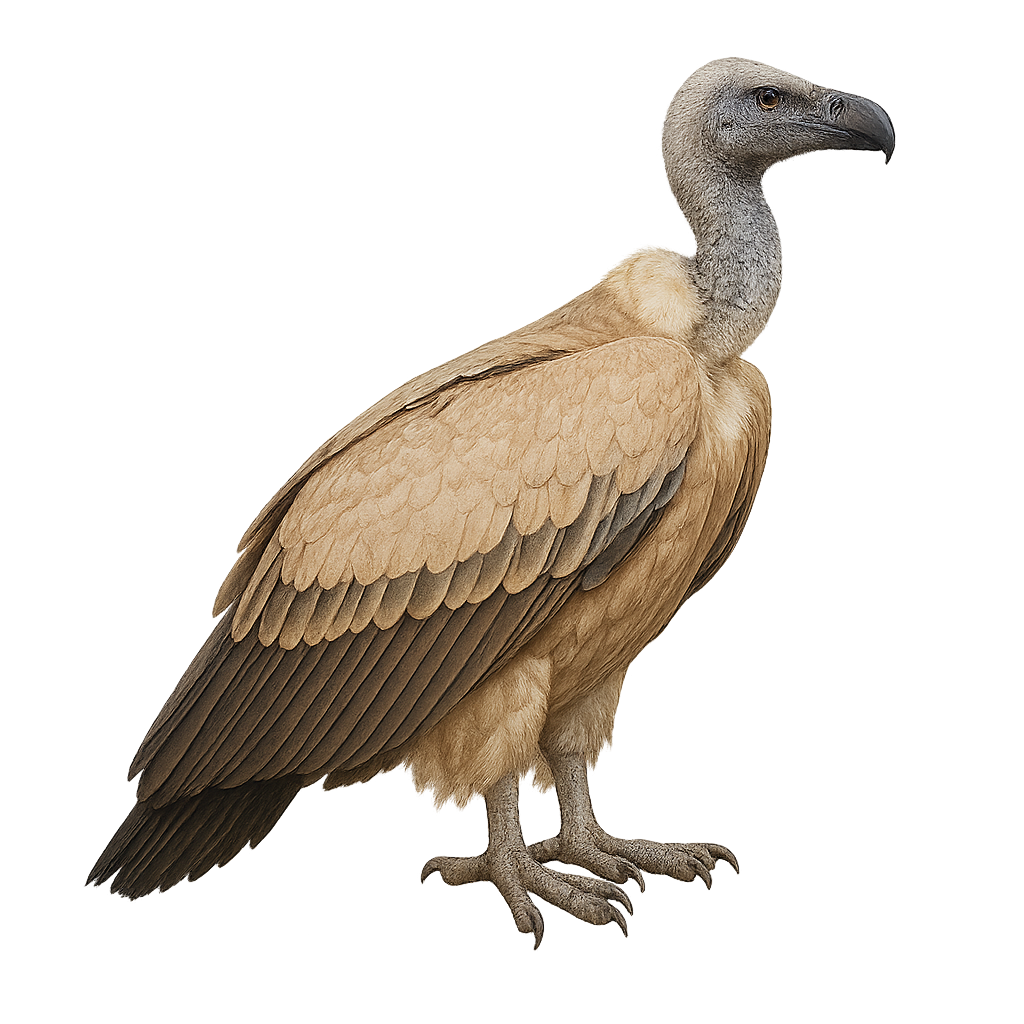Your wildlife photography guide.
Explore the cape vulture in detail, study its behavior, prepare your shots.
Where to observe and photograph the cape vulture in the wild
Learn where and when to spot the cape vulture in the wild, how to identify the species based on distinctive features, and what natural environments it inhabits. The WildlifePhotographer app offers tailored photography tips that reflect the cape vulture’s behavior, helping you capture better wildlife images. Explore the full species profile for key information including description, habitat, active periods, and approach techniques.
Cape Vulture
Scientific name: Gyps coprotheres

IUCN Status: Vulnerable
Family: ACCIPITRIDAE
Group: Birds
Sensitivity to human approach: Suspicious
Minimum approach distance: 30 m
Courtship display: May to June
Incubation: 54-58 jours
Hatchings: June to August
Habitat:
cliffs, savannas, open grasslands
Activity period :
Primarily active during the day, with peak activity in the morning and late afternoon.
Identification and description:
The Cape Vulture, or Gyps coprotheres, is a large scavenging bird native to southern Africa. It is characterized by its bald head and neck, which are well-suited to its carrion-based diet. Its plumage is mostly beige with darker tones on the wings. This vulture plays a vital role in the ecosystem by disposing of carcasses, thus helping to prevent the spread of diseases. It nests in colonies on cliffs, usually laying a single egg per year. Unfortunately, this species is threatened by habitat loss, poisoning, and collisions with human structures. Conservation efforts are underway to protect and restore its populations.
Recommended lens:
400mm – adjust based on distance, desired framing (portrait or habitat), and approach conditions.
Photography tips:
To photograph the Cape Vulture, focus on cliff areas where they nest. Use a telephoto lens of 400mm or more to capture detailed images without disturbing them. Early morning hours are ideal for soft lighting and increased bird activity. Be patient and wait for them to take flight to capture dynamic shots. Ensure you maintain a safe distance of at least 30 m to avoid disturbing their natural behavior.
The WildlifePhotographer App is coming soon!
Be the first to explore the best nature spots, track rutting seasons, log your observations, and observe more wildlife.
Already 1 431 wildlife lovers subscribed worldwide

